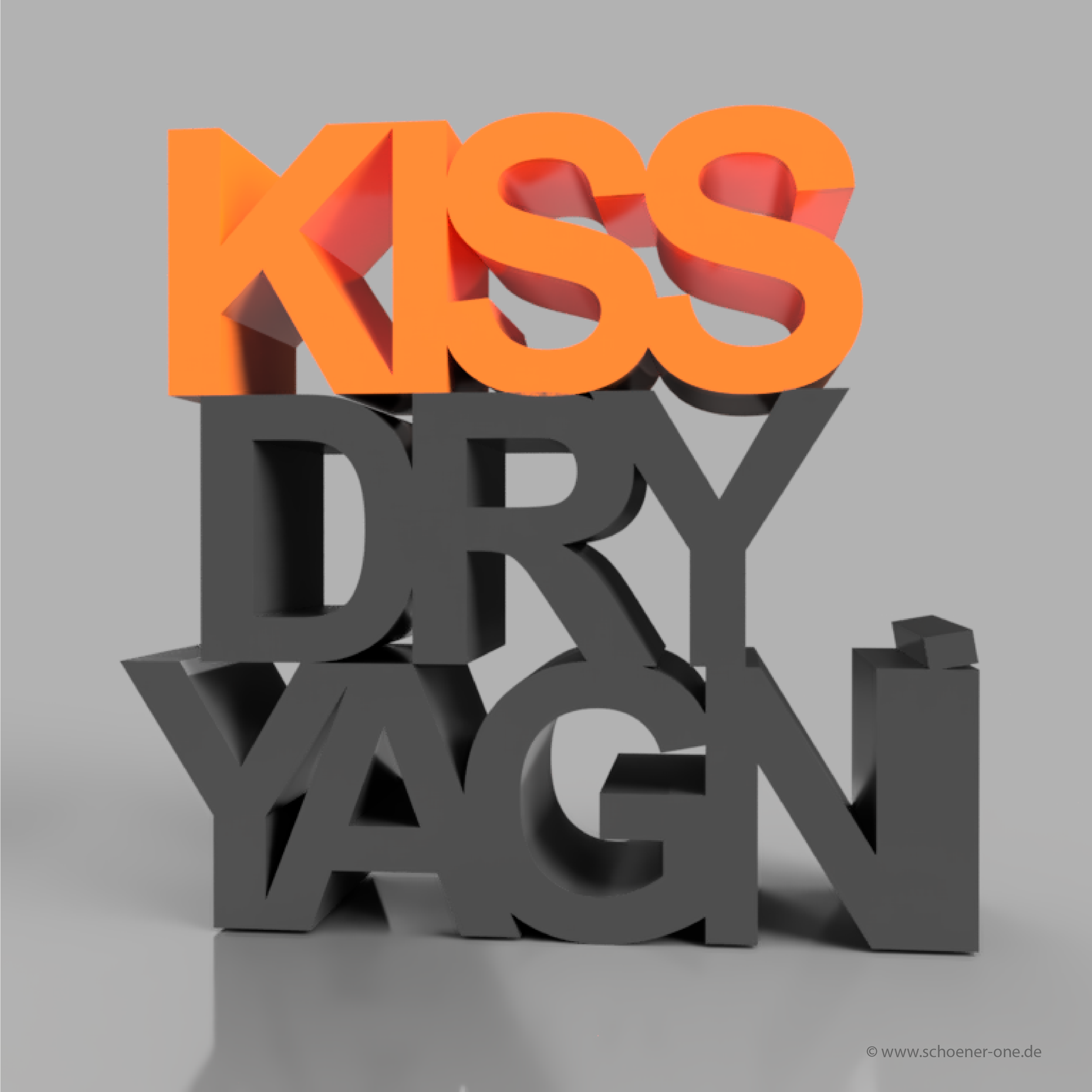The KISS (Keep It Simple, Stupid) principle is one of my favorite principles that I like to use again and again in projects, but not only there. It leads to a more efficient way of working and enables easier handling of the complex structures, which generates great added value for the entire team and, above all, for achieving the project goals. The KISS principle satisfies a fundamental human need to present complex issues in a simplified manner. In projects, however, it often has to be used consciously, according to the quote from Confucius,
"Life is really simple, but we insist on making it complicated".
With the application of the KISS principle, the aim is to find the simplest possible solution with which, on the one hand, the desired goal can be achieved and, on the other hand, unnecessary complexity can be avoided. The solution should be simple and concise. The KISS principle does not necessarily refer to a technical solution, but can also be applied to other areas such as team communication, documentation, processes, etc.
By reducing the complexity, the team is given a better overview of the overall system, which, for example, accelerates the development of the product in the long term. In addition, many errors are avoided, as many things become more understandable.
How do I use the KISS principle?
The details of the application of the principle depend heavily on the respective area of application. However, there are basic rules that can be applied to all areas of application:
- The solution should be based on the goal. Everything that does not directly or indirectly serve to achieve my goal does not generate any value and should be removed or, even better, not added yet!
In terms of technical implementation, this means, for example, that I do not plan or add any functionality that is not really needed. This also means that I subsequently delete or adjust things, such as documents, that are out of date. With this I contribute to a significant improvement of the clarity. Too often outdated documents lead to misunderstandings because structures and processes have changed. Here is less, but current, better! - The relationship between the amount of work required to implement the solution and the value should be as efficient as possible!
In concrete terms, this means that I have to spend as little time as possible on implementing or using my solution, in contrast to the value or benefit that this solution brings me. In software development, for example, the architecture, framework or API used should simplify and accelerate the work so that the development of further functions can be carried out efficiently by the team. - The solution should be as self-explanatory and easy to understand as possible!
The less I have to document additionally, the better. This saves me a lot of time because I don't have to look for and read through extra documentation or ask other people.
By the way, this also applies to the resulting product. The more intuitively a product can be used, the more value it has for the end user. - My solution should be accepted by the team!
Things are only simple if they are simple and understandable for everyone involved. In an agile project, the retrospective or a technical meeting can be used very well to work out a solution with the team members concerned. This ultimately leads to greater acceptance in the team and also to a better solution. - I am constantly simplifying or improving my solution if this generates greater value for me!
This means that I keep applying the points mentioned above whenever I get a more efficient solution (in terms of value). Conversely, I will not do this if it does not increase the value of the solution!
For example, I should regularly question the processes used in the project, especially if they are not accepted by the team or even bypassed. Then, by adapting the processes, I can considerably simplify the processes and contribute to a more efficient way of working.
The conscious application of the KISS principle naturally requires additional effort. Due to the sustained increase in efficiency in the entire team, however, these expenses should quickly be compensated by the resulting savings and the increase in satisfaction in the team.


